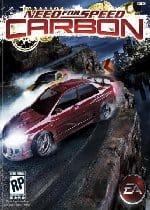Need for Speed takes baby steps and improves slightly on last year’s efforts.
The Need for Speed franchise has always tried to keep pace with the newest trends in underground racing. NFS brought us drift racing in Underground long before most of us had even heard of it. It wasn’t until Most Wanted that NFS achieved a solid balance between racing trends and straight-up police evasion, culminating in the greatest title the series had ever produced. To follow up that success, Carbon brings another racing trend that is more popular across the Pacific Ocean than in the States in the form of downhill drifting. As seen in the latest Fast and the Furious, Japanese gear-heads have been tearing down hills with reckless abandon for a while. To go along with this new race type, EA Black Box has also constructed an entirely new career system that challenges players to conquer a city street by street. While these and all of the other additions add up to a solid racing title, Carbon feels more like a mix between Underground 2 and Most Wanted instead of a title of its own.

When players last saw the BMW M3 it was fleeing the police on its way out of Rockport. With Sergeant Cross, or rather bounty hunter Cross now, hot on his heels, the protagonist returns to Palmont after a five-year hiatus. With a busted ride and the tarnished reputation of a thief and backstabber, players will find themselves in the familiar position of rock-bottom with nowhere to go but up. The storyline is presented in hybrid FMV and CG, just like in Most Wanted, to varying success. When the actors that play these one-dimensional characters are half-way competent, the cut scenes are actually interesting to watch. More often then not, however, the acting is just as bad, if not worse, than Most Wanted.
Instead of working up a list or gunning for specific drivers, as was the case in Most Wanted, players will instead set their sights on conquering different districts of the city by challenging the controlling racing team and beating them. Players also run their own crew as well to help even the odds a little. As you knock off the last territory held by a rival gang, their leader will challenge you to a Canyon Duel (more on that later). This structure takes the best part of Most Wanted, namely, the boss races against supped-up vehicles, and marries it with a very open-ended “choose your path to dominance” mentality. This mode is addicting and provides plenty of content (in the neighborhood of 15 hours for players who don’t cheat by restarting after losses). You’ll even have to repeat races to defend your own turf while you conquer your rivals’, adding even more race opportunities.

Your crew, on the other hand, is a distant afterthought to the entire system. As players progress, they can hire new crew members to wingman for them in races. They come in three types: Drifters, Blockers, and Scouts. Crew members also have “passive” effects both on and off the street as well, where one may award extra cash for a win and others may unlock additional tuning options. On the track, however, they are largely useless and annoying. Drifters, for instance, are supposed to provide a slingshot-type boost by allowing you to follow them in their air stream. Staying in this air stream during a race, however, is nearly impossible. Scouts are even more useless as their job is to find shortcuts for you. More times than not, you’ll know exactly where the shortcuts are and will have no use for this option. The Blocker is the only wingman worth using since they can do real damage to a rival’s lap time by ramming them off the road. In all three cases, your wingman will often get in your way through turns. One time, I called my Blocker to take out a car behind me. When he stopped to hit the trailing car I rammed into the back of him, and the car I called to be taken out whizzed past unscathed. This is not an isolated incident, unfortunately, and the whole feature would have been better off scrapped in favor for something else.
